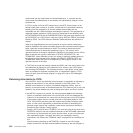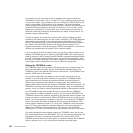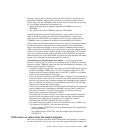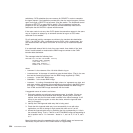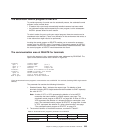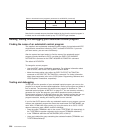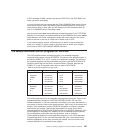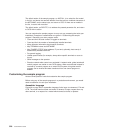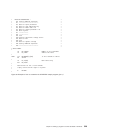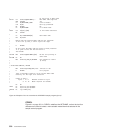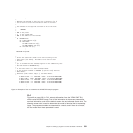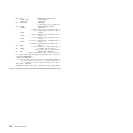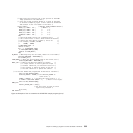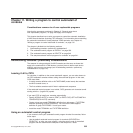The default action of the sample program, on INSTALL, is to select the first model
in the list, and derive the terminal identifier from the last four nonblank characters of
the NETNAME, set the status byte, and return to CICS. If there are no models in
the list, it returns with no action.
The default action, on DELETE, is to address the passed parameter list, and return
to CICS with no action.
You can customize the sample program to carry out any processing that suits your
installation. Examples of customization are given in “Customizing the sample
program.” Generally, your user program could:
v Count and limit the total number of logged-on terminals.
v Count and limit the number of automatically installed terminals.
v Keep utilization information about specific terminals.
v Map TERMINAL name and NETNAME.
v Map TNADDR (TCP/IP client address, IP port and, optionally, host name) of
automatically installed terminals.
v Do general logging.
v Handle special cases (for example, always allow specific terminals or users to
log on).
v Send messages to the operator.
v Exercise network-wide control over autoinstall. A network-wide, global autoinstall
control program can reside on one CICS system. When an autoinstall request is
received by a control program on a remote CICS system, this global control
program can be invoked and data transferred from one control program to
another.
Customizing the sample program
Here are three pieces of code that customize the sample program.
Before using any of the sample programs in a production environment, you would
need to customize it to suit your installation.
Assembler language
Figure 39 on page 529, in assembler language, limits logon to netnames L77A and
L77B. The model names utilized are known in advance. A logon request from any
other terminal, or a request for a model which cannot be found, is rejected.
528 Customization Guide



